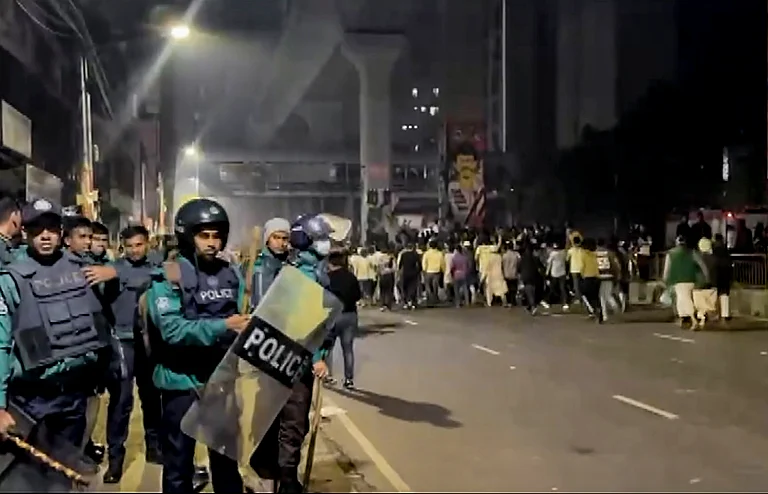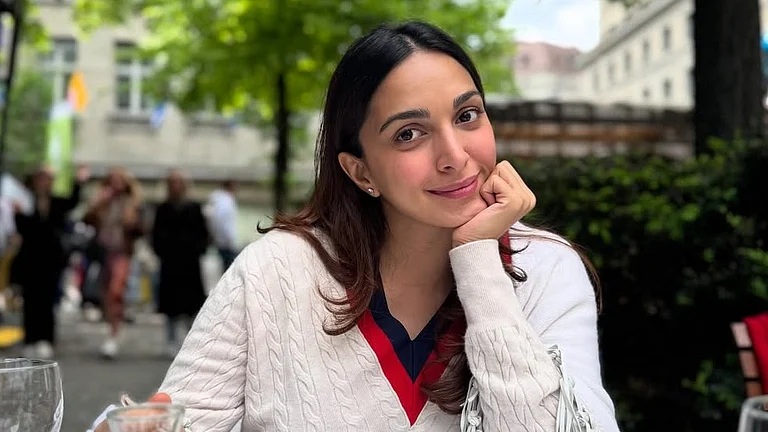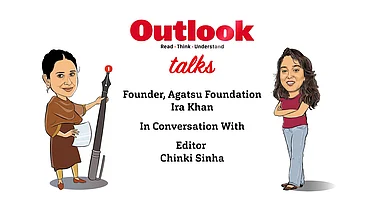“Don’t eat junk food all the time,” I tell her. “Don’t eat ice cream before dinner.” I nag her like any other doting parent. But then unlike other parents I don’t stop my daughter. What else can I do? These are the little joys my daughter Richa has.
Big joys, sadly, I cannot give her. She can’t get married, can’t have children, can’t live a ‘normal’ life. But if going to a cafeteria—even at the hospital—feels like a fun outing to her, I take her. These are the joys I try to give.
She clings to me. I tell her to make friends, to engage with others, but she’s very possessive. I know that after me, she’s going to have a hard time. She’s very dependent on me. So I try to give her whatever little joys I can manage. If that means eating ice cream before dinner or going to a restaurant, I let her. I want her to be happy while I’m there.
My daughter is 53 now, she has been living with paranoid schizophrenia for most of her life. I’ve been her primary caregiver for nearly 34 years. We live together at the campus of the Schizophrenia Awareness Association (SAA) in Pune. I remember when we first came to the SAA. We were the very first patients there. The SAA had been set up in the outskirts of Pune, away from the buzz of the main city. It has been operational since 1997 for persons with mental illness and their families. The SAA is run and managed by user survivors, family caregivers and volunteers jointly and does not have a proprietary style of functioning. It’s a community for those affected by mental illness in anyway.
I’d suggested to the then-president that Richa and I start a small project of making tea and coffee for everyone. And so we did. She even ended up teaching English at the centre for a while.
Richa doesn’t want to come to the SAA these days. She’s been coming for so long—maybe she feels like too much of a senior now. Maybe it’s the language barrier; she speaks only English. I don’t force her. She complains about leg pain, and she doesn’t want to do morning yoga anymore. She is 53, after all.
Just like any other parent, I tell her to eat healthy, not junk food, but unlike most, I let her do what she wants. I’ve sacrificed many things in my life, but never her happiness.
I’ve not watched movies for 30 years. I’ve never had time for hobbies. But this—this is my passion. My hobby. My entertainment. Helping her, and helping others like her.
It all began in 1991, when I got a call from her school principal in Dehradun, asking me to come immediately because Richa was “very unwell”. I was working at the time, but I booked the first flight to Delhi and travelled through the night to Dehradun. In the morning, I met the principal and teaching staff.
They told me Richa had had a nervous breakdown. Even they didn’t understand what mental illness was, much less identify it. Back then, there was a total lack of awareness.
“I hope that in giving my daughter her small joys, I’ve given her something of a life.”
Looking back, the signs were there even in her childhood, but we didn’t recognise them. Her grades were falling. I thought, “Not everyone’s child has to be a topper. Somebody’s child will rank low.” I now realise those were early symptoms.
When her condition worsened, I asked my wife to resign from her job and stay with her. I also left my banking job and took up something better-paying to support the family.
In 2007, we moved to Pune. It was quieter, more peaceful. It was much more conducive for Richa than Mumbai. We lived close to the SAA and took her there daily. She was the only patient back then.
Some grave mistakes were made. In those early days, there was no awareness of mental illness and thus, no availability of the latest medication. The internet had no real information, just a few pages on Wikipedia. Only first-generation medication was available. These are frequently the first incarnations of a medication that helped create newer, frequently better formulations.
When Richa first started medication, she had side effects. Her arms stiffened—so much so that she couldn’t write her 12th-grade exam and had to use a scribe. I remember once we made the mistake of stopping her medication. My wife and her sister took her to a homoeopathic doctor in Dehradun, who advised stopping the allopathic meds. Despite my resistance—and her psychiatrist’s disapproval—the medicine was stopped. The drowsiness vanished, and Richa felt better. We thought she was recovering.
But then the schizophrenia symptoms came back—and worse. What 100 mg could control earlier, 700 mg could not manage anymore. The medication dosage kept rising, and finally, we approached NIMHANS (National Institute of Mental Health and Neurosciences). Over there, I consulted the professors. “You aren’t doing enough medication,” the staff told me. They suggested administering up to 800 mg. Richa’s psychiatrist was not sure whether to implement this; he had capped off the dosage at 300 mg.
But after a discussion with the NIMHANS staff, we decided to increase Richa’s dosage to 700 mg. This caused seizures. So, we brought it down to 500mg, and that remained her threshold for 25 years.
Years later, my wife passed away due to cancer, and Richa’s seizures returned. In one episode, she had five back-to-back seizures—three at home, one in the ambulance, and one at the hospital. This is when I experienced parental anxiety. I stopped the medicine, even though I knew it was a mistake. The doctors told me that more seizures could be fatal. So I listened. I was scared.
Eventually, her symptoms returned, and we had to readjust the dosage multiple times. Now we reintroduced Clozapine at 350 mg, with heavy anti-seizure medication. Stabilising is still a delicate, painful balance. That’s the difficult part. There is no test to confirm mental illness. No blood test, no MRI, no scan shows schizophrenia. It’s about observation. There’s no cure. The medicines help, but you have to continue them lifelong. Even then, one won’t be 100 per cent normal. Only close to normal.
I wanted to help my child, so I began to read everything I could. That’s how I had discovered NIMHANS and later the SAA. And that’s how I became a caregiver—not just for Richa, but for others, too.
I served as the President of the SAA for nearly a decade. I was made Chairperson of the Hospital Management Committee at NIMHANS and even called to the Standing Parliamentary Committee for the Mental Healthcare Bill. I also wrote the book Mental Illness and Caregiving (2016), in 2021, the second edition was published, which is available in Hindi, Marathi and Tamil. These books are a guide for families and caregivers.
The irony is, I brought Richa to these places for help—and then ended up being the one helping the community. I tried to implement as many policies and therapies as possible that could help people living with mental illness. During my tenure as President of the SAA, we experimented with different therapies: art based, dance, music, and drum therapy. Inspired by Augusto Boal’s ‘Theatre of the Oppressed’, we introduced ‘Forum Theatre’—a participatory method where patients enact scenes and choose alternative endings. It helped them express, reflect, and heal. Music therapy helped too. Some patients even created their own compositions. I encouraged it. If the voices in their head were troubling them, I told them to beat the drum and let it all out.
Now, I don’t run things. I’ve built a team, made a succession plan. I’m more of a mentor. If anyone needs me, I am there. At this age, I can’t take up activities. But I’m always available if someone calls. I pick up the phone—even if I’m in a meeting—because I know what it feels like to be in that position.
Looking back, I’ve made a lot of sacrifices for this. But I don’t call it a burden or feel bad. This is my passion, and I feel uneasy if I don’t help. That’s what’s kept me going. And I hope that in giving Richa her small joys, I’ve given her something of a life.”
(As told to Snehal Srivastava)
MORE FROM THIS ISSUE
Share Your Stories Of Caregiving For Someone With Mental Illness: freedomfromstigma@outlookindia.com




























